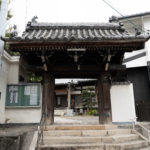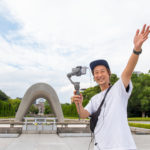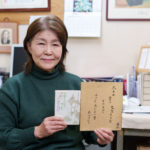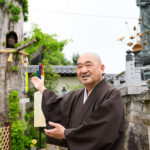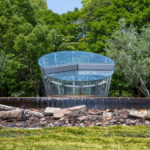Passing Down the Memories of That Day to Countless Generations to Come — An AI-Based Atomic Bomb Testimony Response Device
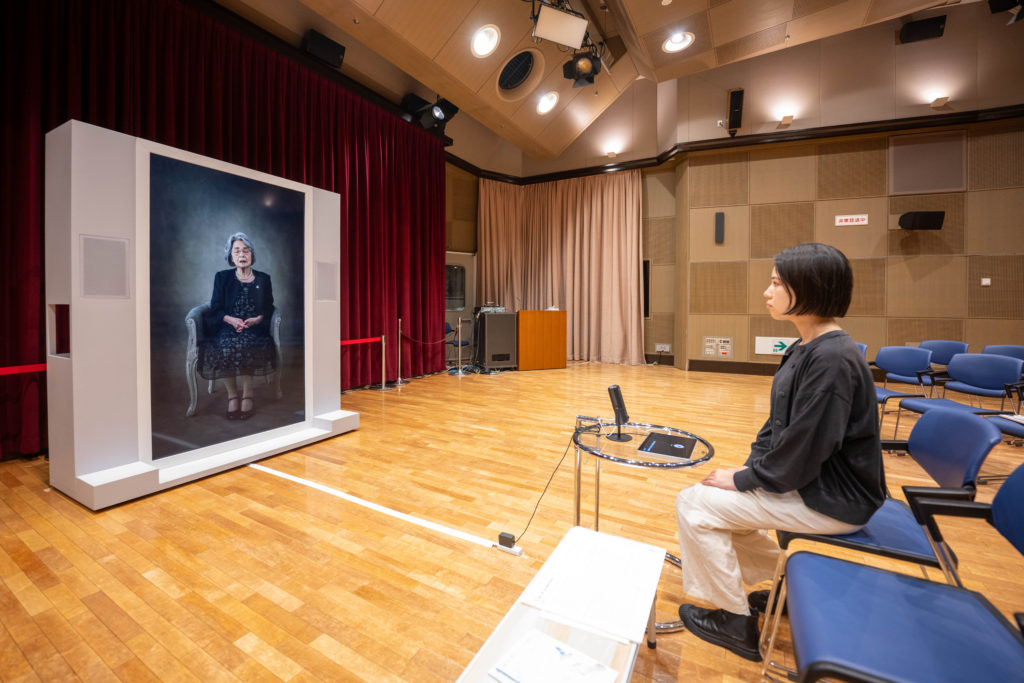
Eien ni Kataritsugitai ~ Mirai ni Nokosu, Ano Toki no Kioku~ (Eternal Memories – Passing Down the Atomic Bomb Testimonies to Countless Generations to Come) is a project of NHK Hiroshima Broadcasting Station aiming to preserve the testimonies of the atomic bomb survivors. It has been shown for a limited time at the National Peace Memorial Hall for the Atomic Bomb Victims in Hiroshima in January 2023 and several other venues. It was also featured in international media at the G7 Hiroshima Summit, earning great acclaim.
The project’s exhibition wall features a screen showing a life-size image of the atomic bomb survivor Kajimoto Yoshiko, who was 91 years old during her testimony. Fiddling with the tablet and greeting her with a “Hello” will prompt her to smile and answer “Hello.” From the list of 99 questions, pick something that piques your interest, such as “What were your thoughts the moment the atomic bomb hit?” and the image of Kajimoto will choose her words carefully and answer it, such as “Hmmm. At that time…”.
Her gentle, warm, and sometimes even humorous voice will immediately draw you into the conversation. Despite knowing she is an AI-based response device, sitting in front of the screen and interacting with her will strangely lull you into the illusion of talking with the actual person herself.
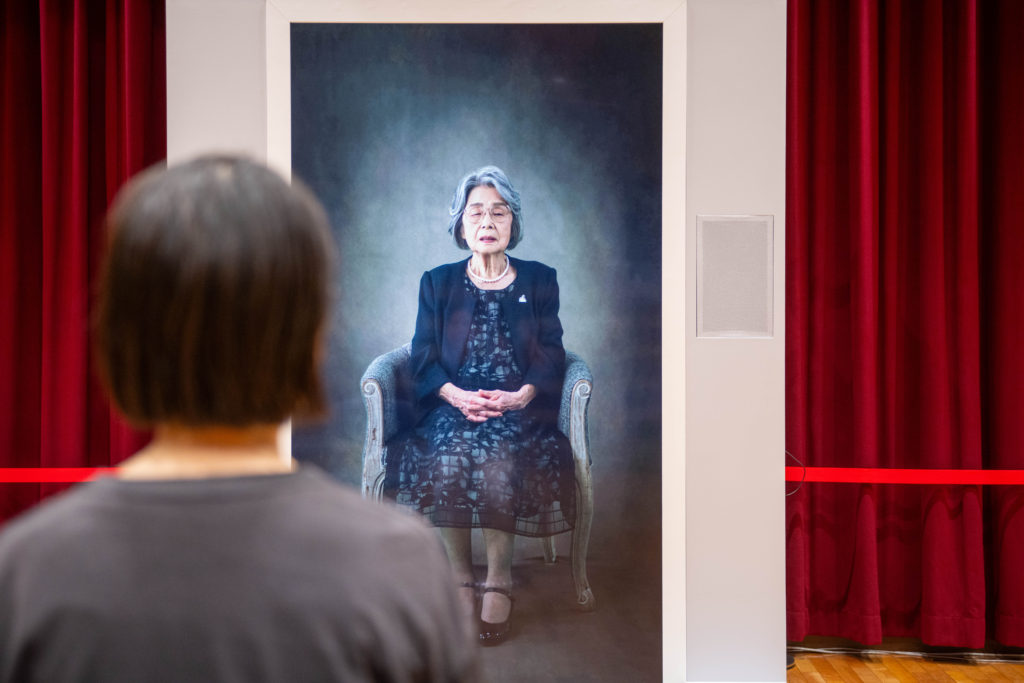
The screen shows the Hiroshima atomic bomb survivor Kajimoto Yoshiko, an active testifier of the tragedy since 2001.
Let us hear more about the impetus behind this AI’s development from Ikuta Seiko, the Chief Producer of the NHK Hiroshima Broadcasting Station’s Content Center.
“Our main drive was finding out what happened to the people of Hiroshima on the day of the atomic bombing and afterward. And the best way to do that was to hear directly from the victims. However, such opportunities are becoming increasingly rare, as the average age of the victims now exceeds 85. We are approaching a world without these people. Now, what can we do to help? Our answer was launching this project.”
NHK Hiroshima has filmed many video testimonies of the atomic bomb survivors. “Although the video testimonies and memoirs of the atomic bomb survivors are all incredibly valuable, it may be sometimes difficult to take the time to view them. In the end, I believe the best approach is to ask the atomic bomb survivors directly, in other words, a two-way interaction where one asks questions and receives answers while getting to know them.”
Ikuta and her colleagues thought about new, sustainable ways to convey the experience of meeting an atomic bomb victim in person to hear their testimonies directly. As they were pondering, they stumbled on a hint—an AI-based response device developed in the US to preserve the testimonies of the people who experienced the Holocaust.
“The project began with the idea that creating such a device would allow us to tell the testimonies of the tragedy in Hiroshima to people inside and outside Japan. We gathered several experts to develop the device from scratch, including a professor involved in the construction of digital archives at the University of Tokyo, a professor of history, and members of the National Peace Memorial Halls for the Atomic Bomb Victims in Hiroshima and Nagasaki, discussing the project’s direction with them.”
At this meeting, someone asserted that this device’s creation should involve the next generation. And so, NHK Hiroshima interviewed young people in the city and asked them what they wanted to hear from an atomic bomb survivor. They also solicited opinions from the students of Hiroshima Municipal Motomachi Senior High School, who had read Kajimoto’s memoir beforehand. We then compiled them into more than 900 questions.
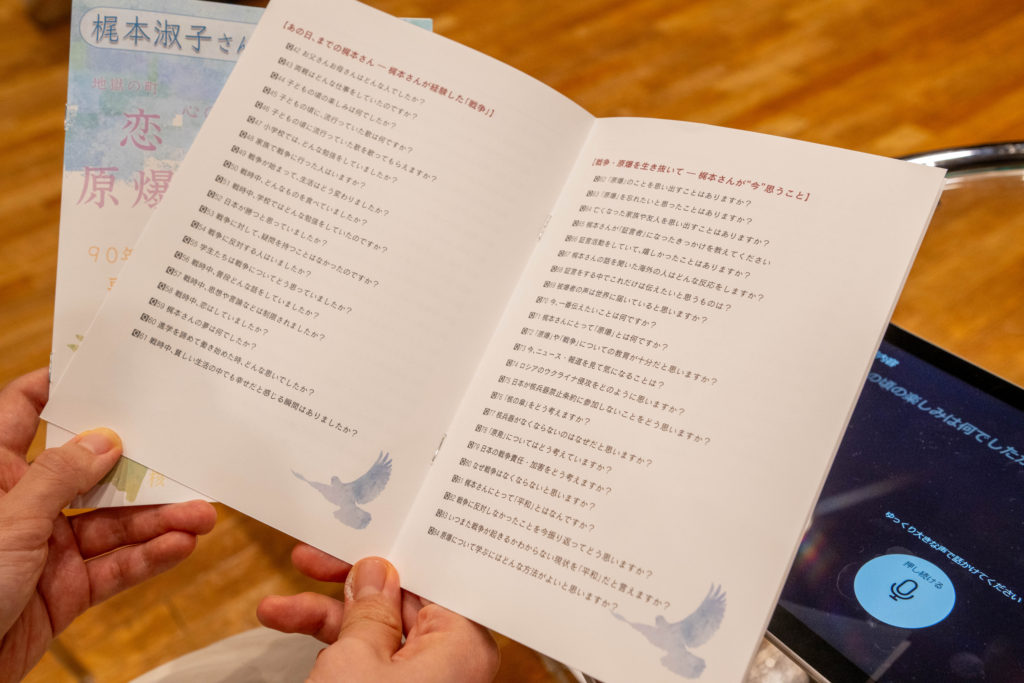
The list of questions used at the venue, with questions divided by topic
“In the system we developed, the user poses a question to the AI, and the AI draws out an answer from Kajimoto’s testimonials based on the question’s keywords. It is not a generative AI like ChatGPT, so we needed a certain amount of cohesive data.”
In the spring of 2022, they invited Kajimoto to the NHK Hiroshima Broadcasting Station for a five-day interview from morning to evening.
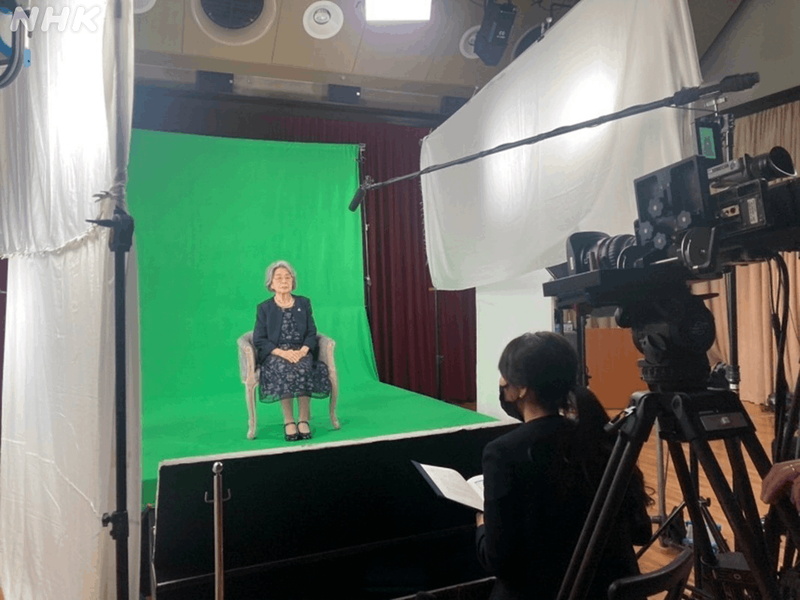
A look at the interview with Kajimoto (Photo courtesy of ©NHK)
“We had to take breaks to check on Ms. Kajimoto’s health due to her advanced age. I think it was indeed very taxing for her to answer over 900 questions. Even so, she stayed with us until the end, telling us that was her final duty. We are truly grateful to her.”
They then gave the database we recorded to an AI development company and had the AI learn the terms and historical background used in the war topics discussed in Kajimoto’s answers, including food, clothing, and shelter, to build a network of memories. For example, when asking, “What was the first food you ate after the atomic bombing?” the AI would use the keywords “atomic bomb” and “food” as clues, allowing it to retrieve Kajimoto’s testimony about her tears flowing over the rice ball she ate after the bombing.
Although the system can answer questions freely, voice misinterpretation and other issues still remain. Because of this, they prepared a list of 99 carefully selected questions. The participants can then pick the ones they want to ask Kajimoto’s AI.
“Some of these questions were not directly related to the war, such as ‘Were you ever in love?’ and ‘What would you do if you were tired of living?’. We hope that fleshing out Ms. Kajimoto’s personality through these topics will give the participant a sense of how the atomic bombing abruptly changed the life of an ordinary person who is not so different from us.”
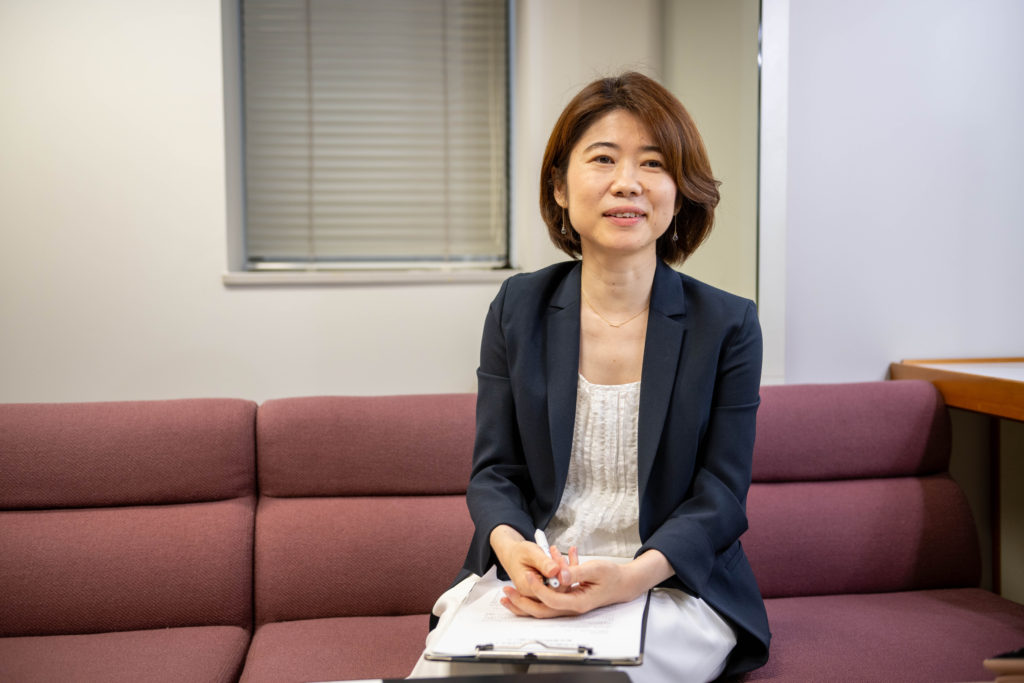
“When asking questions, we sometimes get carried away and go off on a tangent. I can relate, and I think it’s part of being human,” says Ikuta.
“The editing process is crucial to conveying information clearly within a limited time frame. In other words, we cut and piece together long pieces of information. However, this project reminded me that some important pieces also hide among the cut segments,” explains Ikuta.
“Ms. Kajimoto experienced many things after the atomic bombing and has lived a long life. This alone makes her testimony resonate even more with our hearts. I feel truly honored to be able to preserve Ms. Kajimoto’s testimony as it is for the future.”
Some answers also have English subtitles, which earned the praise of the foreign journalists who tried it at the G7 Hiroshima Summit. “It would be wonderful if we could ask questions in English in the future, as it would give people from overseas the chance to engage in dialogue with the atomic bomb victims.”
NHK Hiroshima Broadcasting Station will continue to examine and discuss English-language support and other technologies, planning to make this AI-based response device available to the public at events. If you have a chance, please come and engage in a valuable dialogue with Kajimoto Yoshiko.
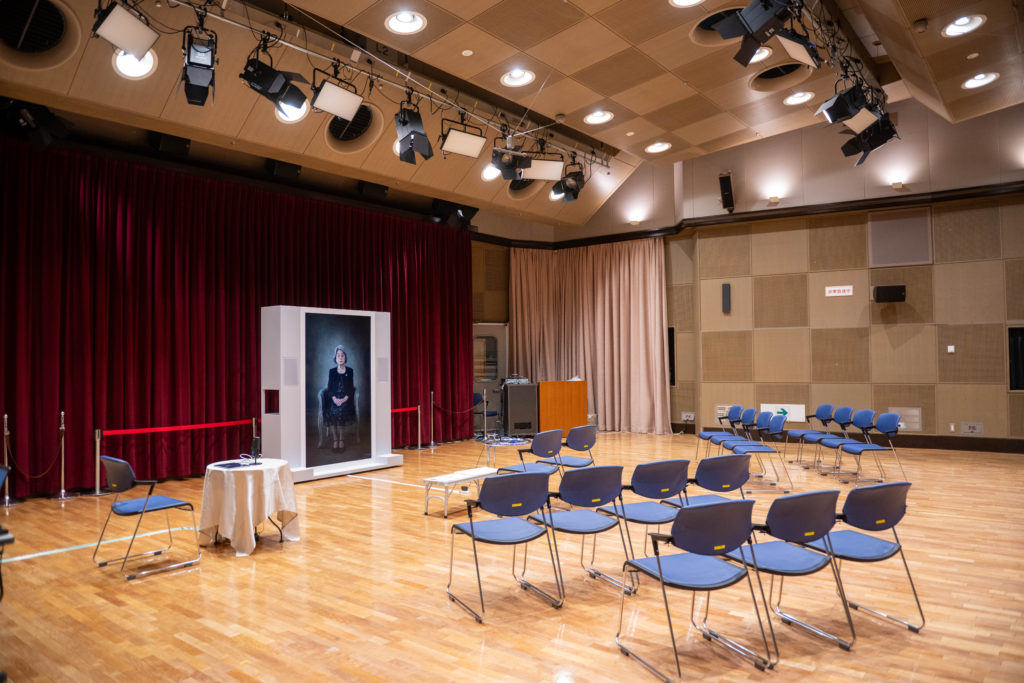
■ Project Web Page
https://www.nhk.or.jp/hiroshima/hibaku75/taiwa/
■ Inquiries
NHK Hiroshima Broadcasting Station
2-10-11 Ōtemachi, Naka Ward, Hiroshima
082-504-5111
https://www.nhk.or.jp/hiroshima/
Tags associated with this article



